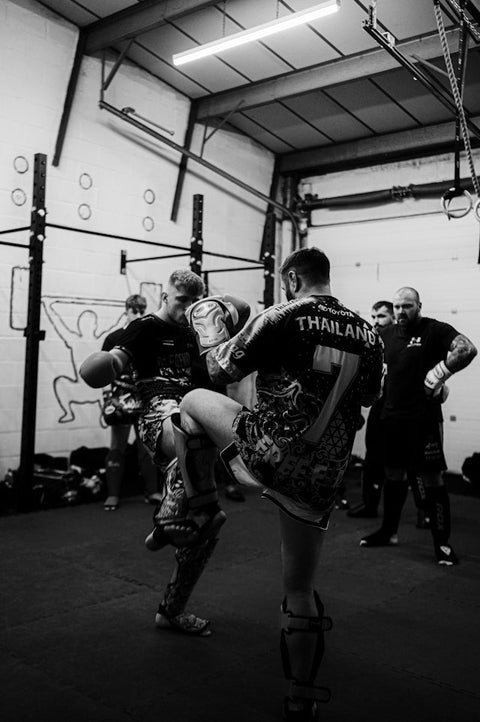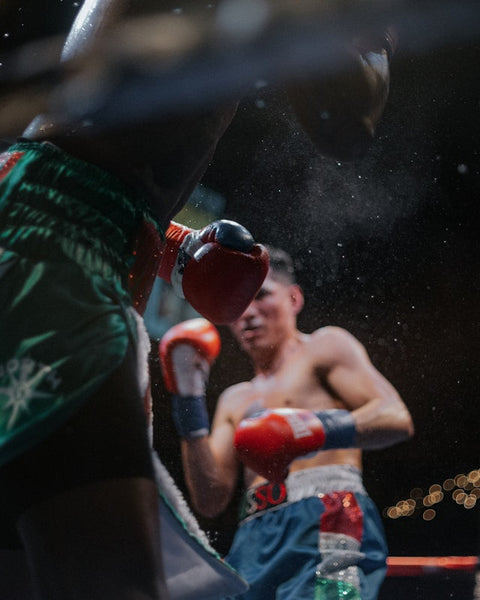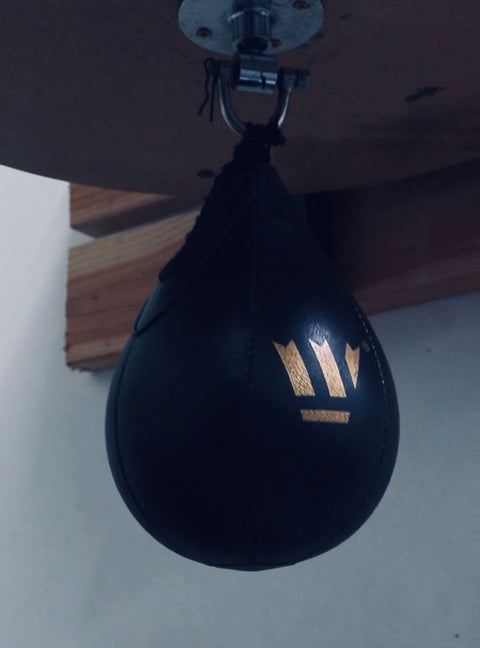Boxing and kickboxing are the two most popular titans in combat sports. Boxing hones in on punches, weaving a combination of hand speed, head movements, and timing. Kickboxing is a blend of kicks and punches, resulting in a more diverse attacking approach. Whether you are new to the field of combat, learning which discipline is the best for you, or simply a fan trying to understand the differences between boxing and kickboxing so you can enjoy the sport, we have got you covered! Let's dive in to see what makes kickboxing vs boxing unique.
Boxing
Boxing is an upper-body workout. Boxing is a dance of fists and feet. Footwork is the engine behind moves, allowing fighters to be swift in their motion. Head movement is the art of the game! Knowing when to tilt or duck is what's going to save you from a blowout or help you miss the punch.
Kickboxing
Kickboxing is a full-body workout. It is a mosaic of punches, knee strikes, and kicks. It is all about balance and coordination, where fighters are actively using their upper and lower bodies for offense and defense. Self-defense training programs teach kickboxing since it is a full-blown cardiovascular workout.
Kickboxing versus Boxing: Target zones
Boxing, as the name suggests, allows fighters to strike with their hands only. Your only target zones are head and torso, since strikes below the belt are illegal. Kickboxing is an art that extends beyond the fists. Depending on the style, it incorporates knees and elbows (Muay Thai-influenced variations). From head kicks to leg sweeps, it provides a greater range of techniques and more inventive ways to take down an opponent.
Kickboxing versus Boxing: Defensive Strategies
A striking difference between boxing and kickboxing is how you defend yourself from your opponent in the ring. Using hands and arms to block an incoming attack on the face and torso is the goal of boxing. Quick instincts are what set you apart from your opponent in this sport, ducking to dodge a jab. Contrary to this, you can't just save yourself by ducking a punch. There's a chance of getting hit on the face. Defensive maneuvers in kickboxing teach you to be ready to block a punch or kick, or both.
Rule the Ring: Kickboxing versus Boxing
Rounds
Professional boxing matches consist of 12 three-minute rounds with a minute break in between, while kickboxing consists of 3 to 5 rounds, two to three minutes each, with a minute rest in between.
Legal Strikes
Punches above the belt to the upper body or head are allowed in boxing. Punches and kicks can target the head, body, and legs in kickboxing.
Illegal Strikes
Kicking, kneeing, headbutting, and hitting below the waist are prohibited in boxing. Elbows, striking the back of the head, or grappling (depending on the style of the combat) are illegal in kickboxing.
Kickboxing versus Boxing: Scoring Strikes
Boxing includes a 10-point score system. Boxers are awarded points for clean punches, defense, ring control, and aggression. The winner receives 10 points while the loser is awarded 9 points or fewer.
Kickboxing has a 10-point score system as well, but the criteria expand to include knees and kicks depending on the style. Judges score each round based on effective strikes, aggression, and ring control. The scoring system can vary in different combat styles, though.
Kickboxing versus Boxing: The Technique Showdown
Boxing
Boxers specialize in punching techniques.
· The jab: a quick punch with the lead hand to keep the target at a distance while paving the way for stronger blows.
· The cross: it is followed by the jab with the rear hand to deliver a straight, powerful punch.
· The hook: dangerous if delivered correctly, is a side-way punch targeting the rival's head or body.
· The uppercut: it is a direct punch to the opponent's chin in close proximity.
Kickboxing
It includes a diverse range of techniques, honing punches and kicks. The punching style for kickboxers is the same as boxers, including the jab, cross, uppercut, and hook, but kickboxers master kicks as well.
· Roundhouse kick: hitting the head, torso, or legs to deliver a powerful impact.
· Front kick: pushing your opponent back and creating space
· Side kicks: While spinning kicks offer unpredictability and have the potential to land with significant force, side kicks are excellent for maintaining distance.
Another difference between boxing and kickboxing is that of clinching. It is almost rapidly broken up by the referee in boxing, while kickboxers are allowed extended clinching and strikes within the clinch based on the kickboxing method.
Kickboxing versus Boxing: The Armor of the Ring
The protective gear for boxers and kickboxers is the same, with some additions in kickboxing.
Boxers
· Gloves: padded to protect hands and reduce the blow to the opponent.
· Mouthguard: to reduce the impact and protect teeth while preventing concussions
· Headgear: a choice for amateur boxing. It protects the head from injuries
· Groin protectors: in case of accidental blows
Kickboxers
In addition to the above gear, kickboxing includes.
· Shin guards: to safeguard the shins from attacks
· Gloves: more adaptable than boxing gloves to accommodate punches and kicks
Boxing Pros and Cons
Boxing Pros
· It is a blend of aerobic and anaerobic workouts
· A very practical sport
· Increased hand speed and punching power
· Stronger defensive skills
· Stronger head movements
· Easy to learn since it involves only punches
· Improved hand-eye coordination and balance
· Boosts stamina and increases resilience
· Improves heart health and regulates sleep
Boxing Cons
· Harder to transition to MMA or kickboxing
· Less striking options
· More chances of injuries
· Increased brain injury risks due to repeated strikes
Helpful Tips and Tricks for Boxing and Kickboxing
· Stay true to the techniques
· Consistency is key in training
· Safety first, always use protective gear
· Master footwork
· Warm-up before sparring is a must
· Build core strength, focus on stretching
· Spar with different partners to learn more techniques and develop adaptability
· Train both offense and defense
· To avoid injuries and boost performance, watch fight footage, pay attention to the coach, maintain discipline, and use appropriate form.
Conclusion
Kickboxing is a full-body defense mechanism, whereas the focal point of boxing is a face-to-face standoff. Clean punching is a top priority in boxing. Diverse hitting is rewarded in kickboxing.




